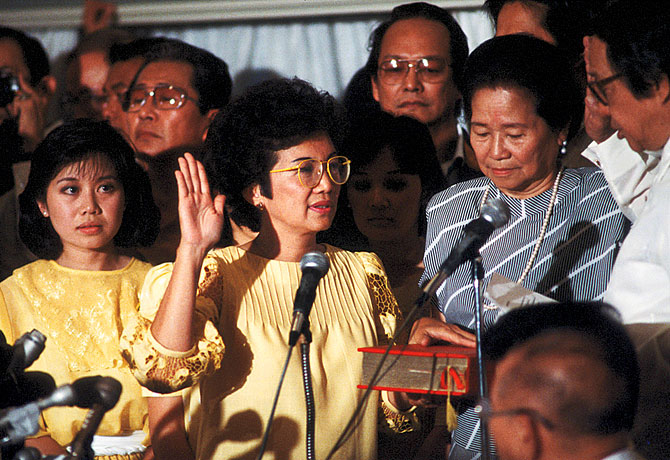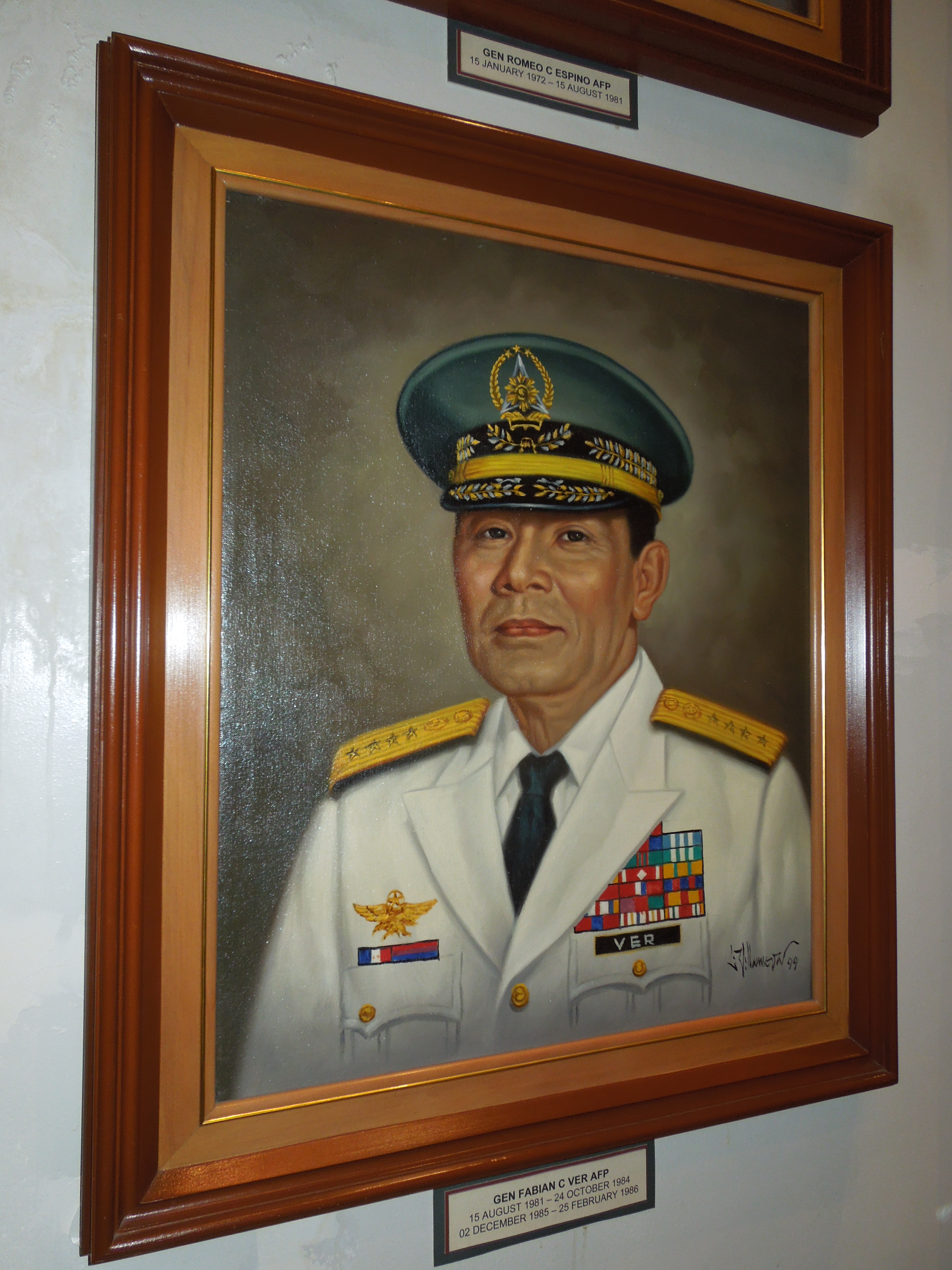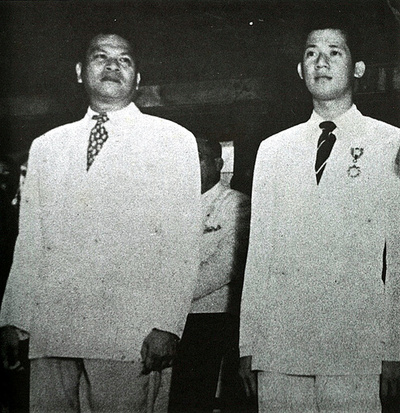|
Sandiganbayan (Commonwealth, Quezon City; 2017-03-27)
The Sandiganbayan ( en, Support of the Nation) is a special appellate collegial court in the Philippines that has jurisdiction over criminal and civil cases involving graft and corrupt practices and other offenses committed by public officers and employees, including those in government-owned and controlled corporations. The special court was established by Presidential Decree No. 1486. It was subsequently modified by Presidential Decree No. 1606 and by Republic Acts 7975, 8249 and 10660. It is equal in rank to the Court of Appeals, and consists of fourteen Associate Justices and one Presiding Justice. The Office of the Ombudsman owns exclusive authority to bring cases to the Sandiganbayan. The Sandiganbayan is housed in the Centennial Building, Commonwealth Avenue, National Government Center, Diliman, Quezon City, Metro Manila. History The Sandiganbayan was established under the administration of President Ferdinand E. Marcos on June 11, 1978, by Presidential Decree ... [...More Info...] [...Related Items...] OR: [Wikipedia] [Google] [Baidu] |
Commonwealth Avenue, Quezon City
Commonwealth Avenue, formerly known as Don Mariano Marcos Avenue, is a highway located in Quezon City, Philippines, which spans from six to eighteen lanes and is the widest in the Philippines. It is one of the major roads in Metro Manila and is designated as part of Radial Road 7 (R-7) of the older Manila arterial road system and National Route 170 (N170) of the Philippine highway network. Commonwealth Avenue starts from Elliptical Road, which circumscribes the Quezon Memorial Circle, and it passes through the areas of Philcoa, Tandang Sora, Balara, Batasan Hills, Fairview, and ends at Quirino Highway in the Novaliches area. The avenue, being located on Quezon City, which is listed as one of several cities in Metro Manila with high incidence of road accidents, has a high rate of accidents, especially related to overspeeding, and has gained the nickname "Killer Highway". A speed limit is being enforced to reduce the high rate of accidents on the avenue. Route description Comm ... [...More Info...] [...Related Items...] OR: [Wikipedia] [Google] [Baidu] |
Ombudsman Of The Philippines
The Ombudsman of the Philippines, also known as Tanodbayan ng Pilipinas, is an ombudsman responsible for investigating and prosecuting Philippine government officials accused of crimes, especially graft and corruption. Functions Under the 1987 Philippine Constitution and the Ombudsman Act of 1989, the Office of the Ombudsman independently monitors all three branches of the government for political corruption. The Ombudsman "is principally tasked to investigate on its own or upon complaint by any person, in any form or manner, any act or omission of any public officer or employee, including those in government-owned or controlled corporations, which appears to be illegal, unjust, improper or inefficient." After an investigation, the Ombudsman files charges at the Sandiganbayan, a special anti-graft court. The Offices of the Ombudsman includes the Ombudsman's own office, along with offices for a team composed of a Sheriff, the Ombudsman's second in command, and six other depu ... [...More Info...] [...Related Items...] OR: [Wikipedia] [Google] [Baidu] |
Separation Of Powers
Separation of powers refers to the division of a state's government into branches, each with separate, independent powers and responsibilities, so that the powers of one branch are not in conflict with those of the other branches. The typical division is into three branches: a legislature, an executive, and a judiciary, which is sometimes called the model. It can be contrasted with the fusion of powers in parliamentary and semi-presidential systems where there can be overlap in membership and functions between different branches, especially the executive and legislative, although in most non-authoritarian jurisdictions, the judiciary almost never overlaps with the other branches, whether powers in the jurisdiction are separated or fused. The intention behind a system of separated powers is to prevent the concentration of power by providing for checks and balances. The separation of powers model is often imprecisely and metonymically used interchangeably with the ' pri ... [...More Info...] [...Related Items...] OR: [Wikipedia] [Google] [Baidu] |
Corazon Aquino
Maria Corazon "Cory" Sumulong Cojuangco-Aquino (; ; January 25, 1933 – August 1, 2009) was a Filipina politician who served as the 11th president of the Philippines from 1986 to 1992. She was the most prominent figure of the 1986 People Power Revolution, which ended the two-decade rule of President Ferdinand Marcos and led to the establishment of the current democratic Fifth Philippine Republic. Corazon Aquino was married to Senator Benigno Aquino Jr., who was one of the most prominent critics of President Marcos. After the assassination of her husband on August 21, 1983, she emerged as leader of the opposition against the president. In late 1985, Marcos called for a snap election, and Aquino ran for president with former Senator Salvador Laurel as her running mate for vice president. After the election held on February 7, 1986, the Batasang Pambansa proclaimed Marcos and his running mate Arturo Tolentino as the winners, which prompted allegations of electoral f ... [...More Info...] [...Related Items...] OR: [Wikipedia] [Google] [Baidu] |
Armed Forces Of The Philippines
The Armed Forces of the Philippines (AFP) ( fil, Sandatahang Lakas ng Pilipinas) are the military forces of the Philippines. It consists of three main service branches; the Army, the Air Force, and the Navy (including the Marine Corps). The President of the Philippines is the Commander-in-Chief of the AFP and forms military policy with the Department of National Defense, an executive department acting as the principal organ by which military policy is carried out, while the Chief of Staff of the Armed Forces of the Philippines serves as the overall commander and the highest-ranking officer in the AFP. Founded under the National Defense Act of 1935, while tracing its roots to the Philippine Revolutionary Army, the AFP has played an integral part in the country's history. The AFP has also been involved in various conflicts, such as combatting rebellion against the Communist Party of the Philippines (CPP) and it's attached organizations, the New People's Army (NPA) and t ... [...More Info...] [...Related Items...] OR: [Wikipedia] [Google] [Baidu] |
Fabian Ver
Fabian Crisologo Ver (born Fabian Maria Trinidad Juan Cirilo Crisologo y Ver; 20 January 1920 – 21 November 1998) was a Filipino military officer who served as the Commanding Officer of the Armed Forces of the Philippines under President Ferdinand Marcos. Early life and education Fabian Ver was born on January 20, 1920, to Juan Ver and Elena Crisologo. He grew up in the town of Sarrat in Ilocos Norte. Ver attended the University of the Philippines and was an alumnus of its reserve program. He also joined the UP Vanguard in 1941. However, the outbreak of World War II disrupted his studies. After the war, he resumed his studies at the University of Manila where he obtained a Bachelor of Law degree and later the University of Louisville where he graduated with a degree in police administration in 1963. He also undertook training in Hawaii and with the Los Angeles Police Department. Military and political career During World War II, he acted as a guerrilla intelligence officer ... [...More Info...] [...Related Items...] OR: [Wikipedia] [Google] [Baidu] |
Benigno Aquino Jr
Benigno "Ninoy" Simeon Aquino Jr., (; November 27, 1932 – August 21, 1983) was a Filipino politician who served as a senator of the Philippines (1967–1972) and governor of the province of Tarlac. Aquino was the husband of Corazon Aquino, who became the 11th president of the Philippines after his assassination, and father of Benigno Aquino III, who became the 15th president of the Philippines. Aquino, together with Gerardo Roxas and Jovito Salonga, helped form the leadership of the opposition towards then President Ferdinand Marcos. He was the aggressive leader who together with the intellectual leader Sen. Jose W. Diokno led the overall opposition. Early in his Senate career, Aquino vigorously attempted to investigate the Jabidah massacre in March 1968. Shortly after the imposition of martial law in 1972, Aquino was arrested along with other members of the opposition. He was incarcerated for seven years. He has been described as Marcos' "most famous political pri ... [...More Info...] [...Related Items...] OR: [Wikipedia] [Google] [Baidu] |
Skeleton Crew
A skeleton crew is the minimum number of personnel needed to operate and maintain an item such as a business, organization, or ship at its most simple operating requirements. Skeleton crews are often utilized during an emergency and are meant to keep an item's vital functions operating. The COVID-19 pandemic is an example of when skeleton crews are used, such as in news stations. Uses * Shipboard – to keep a ship operating after it has been damaged and awaiting tow to port. * Blizzards, hurricanes, and typhoons – to remain at a business location during a major storm to monitor conditions and to make emergency repairs if possible. * Inactivity – to keep an inactive facility, such as a commercial building in transition between owners, from being vandalized. * Temporary closings – to monitor and maintain the facility while it is otherwise shut down for a holiday, strike, etc. * Medical attention – to keep an inactive facility for radioactive poisoning. * Film crew – on ... [...More Info...] [...Related Items...] OR: [Wikipedia] [Google] [Baidu] |
People Power Revolution
The People Power Revolution, also known as the EDSA Revolution or the February Revolution, was a series of popular Demonstration (people), demonstrations in the Philippines, mostly in Metro Manila, from February 22 to 25, 1986. There was a sustained campaign of civil resistance against regime violence and electoral fraud. The nonviolent revolution led to the departure of Ferdinand Marcos, the end of his 20-year dictatorship and the restoration of democracy in the Philippines. It is also referred to as the Yellow Revolution due to the presence of yellow ribbons during demonstrations (in reference to the Tony Orlando and Dawn song "Tie a Yellow Ribbon Round the Ole Oak Tree") as a symbol of protest following the Assassination of Benigno Aquino Jr., assassination of Filipino senator Benigno "Ninoy" Aquino, Jr. in August 1983 upon his return to the Philippines from exile. It was widely seen as a victory of the people against two decades of presidential rule by President Marcos, ... [...More Info...] [...Related Items...] OR: [Wikipedia] [Google] [Baidu] |
Court Of Appeals Of The Philippines
The Court of Appeals ( fil, Hukuman ng Pag-aapela) is an appellate collegiate court in the Philippines. The Court of Appeals consists of one presiding justice and sixty-eight associate justices. Pursuant to the Constitution, the Court of Appeals "reviews not only the decisions and orders of the Regional Trial Courts awards, judgments, final orders or resolutions of, or authorized by administrative agencies exercising quasi-judicial functions mentioned in Rule 43 of the 1997 Rules of Civil Procedure, plus the National Amnesty Commission (Pres. Proclamation No. 347 of 1994) and the Office of the Ombudsman". Under Republic Act No. 9282, which elevated the Court of Tax Appeals to the same level of the Court of Appeals, ''en banc'' decisions of the Court of Tax Appeals are subject to review by the Supreme Court instead of the Court of Appeals (as opposed to what is currently provided in Section 1, Rule 43 of the Rules of Court). Added to the formidable list are the decisions and re ... [...More Info...] [...Related Items...] OR: [Wikipedia] [Google] [Baidu] |
1973 Constitution Of The Philippines
The Constitution of the Philippines (Filipino: ''Saligang Batas ng Pilipinas'' or ''Konstitusyon ng Pilipinas'', Spanish: ''Constitución de la República de Filipinas'') is the constitution or the supreme law of the Republic of the Philippines. Its final draft was completed by the Constitutional Commission on October 12, 1986, and ratified by a nationwide plebiscite on February 2, 1987. Three other constitutions have effectively governed the country in its history: the 1935 Commonwealth Constitution, the 1973 Constitution, and the 1986 Freedom Constitution. The earliest constitution establishing a "Philippine Republic", the 1899 Malolos Constitution, was never fully implemented throughout the Philippines and did not establish a state that was internationally recognized, due in great part to the eruption of the Philippine–American War. Background of the 1987 Constitution Ruling by decree during the early months of her tenure as a president installed via the People Power ... [...More Info...] [...Related Items...] OR: [Wikipedia] [Google] [Baidu] |





